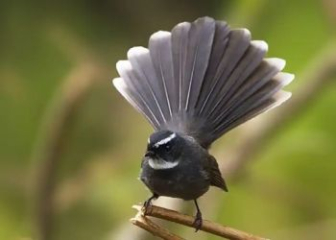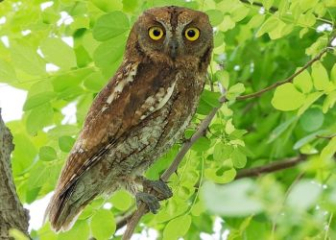Oriental Oriole - Characteristics, habits, breeding instructions
Blog | by
The Oriental Oriole (Oriolus chinensis) is a popular pet bird in Vietnam, famous for its brilliant appearance and sweet, clear voice.
The Oriental Oriole (scientific name: Oriolus chinensis) is a popular pet bird in Southeast Asia, including Vietnam. Famous for its clear, melodious, rhythmic singing voice and small, lovely appearance.
In addition, this bird is very easy to tame and adapts well to captivity, does not require fussy eating or care, and is suitable for even beginners in bird keeping.
In the article below, nicebirds will introduce in detail the origin, appearance, habits and techniques to stimulate the Oriental oriole to sing well, let's find out now!
Information about Oriental Oriole :
|
Scientific name |
Oriolus chinensis |
|
Common name |
Oriental Oriole |
|
Surname |
Oriolidae (Family Oriole) |
|
Origin, distribution |
Southeast Asia, India |
|
Size |
22 - 25 cm |
|
Lifespan |
Average 5 - 12 years, depending on rearing conditions |
The Oriental Oriole (Oriolus chinensis) is a popular pet bird in Vietnam, famous for its brilliant appearance and sweet, clear voice.
Origin of the Oriental Oriole
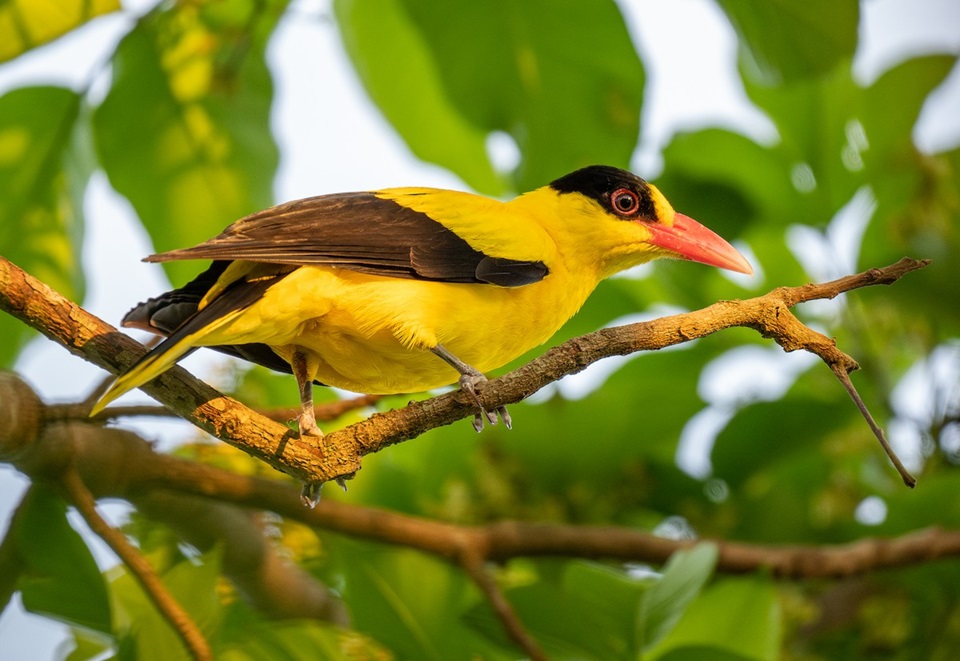
The Oriental Oriole is a bird native to Asia.
The Oriental Oriole is a native bird of Asia, widely distributed in several countries such as Vietnam, India, Thailand, Cambodia, Taiwan, Japan, China and Papua New Guinea.
Currently, Oriolus chinensis has more than 10 different subspecies, however in Vietnam the most common is the O. c. chinensis group, also known as the golden oriole, and they are mainly distributed in the Northern, Central and Southern regions of our country.
Oriental Orchids like warm, green environments such as forests, mountainous areas or even urban fringes.
Oriental Oriole Appearance
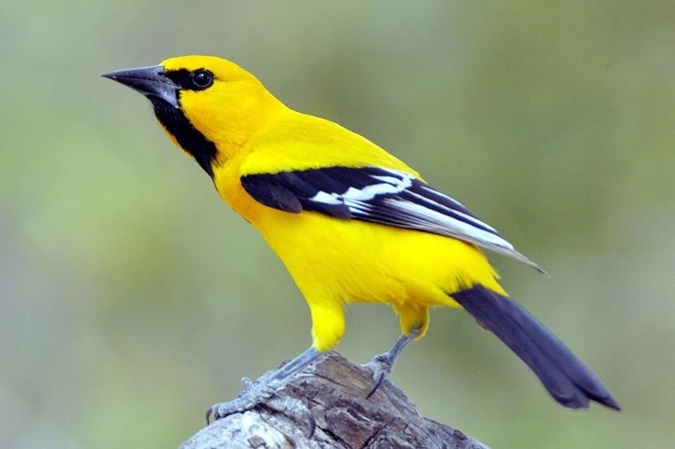
Picture of male oriental oriole with colorful colors.
The Oriental Oriole is also a small, colorful bird. However, there are many differences between male and female birds. Specifically as follows:
General dimensions :
- Length : Average 22 - 25 cm (including tail)
- Weight : 50 - 70g
- Body : Slim, neat.
Identification characteristics of male and female birds:
|
Characteristic |
Eastern Oriole |
Roofed Oriental Orchid |
|
Body color |
Bright yellow |
Light yellow, tinged with olive green |
|
Head and neck |
Has a deep, dark, clear black color |
Pale yellow, with slight grey specks |
|
Wing |
Black with gold border |
Dark brown |
|
Tail |
Black with white border |
Gray or light brown |
|
Eye |
Bright red |
Light red or brown |
|
Mine |
Thick, slightly curved, pinkish red or orange in color |
Similar to male bird |
|
Foot |
Thin, pink or light gray |
Similar to male bird |
Young Oriental Orchids will have a lighter color, usually pale yellow mixed with gray, without the black patches on the head clearly visible.
Oriental Oriole Behavior

The parent oriole is taking care of its chicks.
Let's learn in detail about the characteristics and behaviors of the Oriental oriole to see if they are different from other oriole species in the family!
Bold, intelligent and highly alert
Oriental orioles are very agile and alert. Although they are more tame and less shy than Eurasian orioles, they are still highly alert, especially when approached suddenly.
However, if raised from a young age, they will soon become tame and much less wary.
melodious song
The Oriental Oriole has a very beautiful, melodious voice with a clear rhythm. They often sing a lot in the early morning or during breeding season.
In addition, this bird also has the ability to imitate sounds very well, and can sing along with other birds if it is familiarized for a long time.
Is a year-round resident bird
Oriental Orioles are not long-distance migratory birds, they usually stay in one area if conditions are favorable. And they only move back and forth between tree canopies to look for food.
Prefers to live alone or in pairs
Oriental Orioles do not like to live in herds, they only live alone or in pairs during the breeding season to build nests and take care of their young together.
Is an omnivorous plant-based species.
Oriental Orioles are omnivorous but mainly herbivorous. They like to eat sweet fruits such as figs, strawberries, papaya, mango, bananas, and nectar. Occasionally they may eat small insects such as worms, grasshoppers, soft-winged beetles, etc.
Reproductive behavior
In Vietnam, Oriental Orioles usually breed around April - August. They make nests of moss, dry leaves, and dry grass suspended between two horizontal tree branches. Each clutch of female birds lays 2 - 4 eggs. The eggs are usually creamy white and speckled with brown.
Techniques for raising oriental orioles to sing well

An oriole is eating berries.
Oriental Orioles are popular among pet birds because they have a very beautiful singing voice. However, not everyone knows the techniques to raise them to help them "show off" their full potential. Therefore, right below we have shared many techniques to help Orioles sing best, please join us to learn more!
Choose Oriental Oriole breed
First, if you want to raise a good singing oriole, choosing a breeding bird is very important. You should note the following things!
- You should choose young birds or wild birds for easy taming and singing training.
- Choose male birds because they sing better and more energetically than female birds.
- Choose birds that look smart, have no deformities, have smooth feathers, are not ruffled,...
Prepare the cage and suitable location
Next, you need to prepare a cage as well as a suitable location to help the oriole quickly adapt and be able to sing more confidently. A suitable cage needs to meet the following criteria:
- Choose a large cage with moderately sparse bars, made of bamboo or rust-proof steel or stainless steel.
- The cage should have a water trough, a food trough, a wooden perch and a litter tray.
- The cage should be placed in a place with natural light, limited to drafts, noise, dust and harsh sunlight. It should be placed on the porch, near trees.
Proper nutrition
To have the best and most energetic singing voice for your Oriental Oriole, you need to have a suitable and nutritious diet. You should prioritize feeding them the following foods:
- Main food : Sweet fruits such as bananas, papaya, ripe mango,...
- Supplemental food : Worms and crickets help birds sing more passionately and energetically. Add crushed boiled eggs or bran mixed with fruit.
- Drinking water : Need to drink clean water, change it every day.
Note: You should remove leftover food from the day to avoid spoilage. Do not let birds drink water containing chlorine. You should use boiled water that has been cooled.
Clean and bathe the oriole regularly.
To help the oriole sing better and have smoother feathers, you need to pay attention to keeping the cage clean and sunbathing and bathing the bird regularly. Specifically as follows:
- Bathe your bird 3-4 times a week to help keep its feathers clean and shiny.
- Every day, let the bird bask in the light sunlight in the early morning (before 9am) for about 30 minutes to help the bird sing more enthusiastically.
- Clean the bottom of the cage and remove leftover food every day to avoid odors or mold.
Singing and stimulation training for Oriental Orioles
A key factor to help the oriole sing more happily and beautifully is that you need to practice singing and stimulate them every day. You can do this in the following ways:
- Hang your oriole's cage near other good singing birds so they can learn naturally.
- Open a file recording birdsong or use your phone or speaker every morning to stimulate birdsong. However, only practice for about 30 minutes a day.
Tips to help oriental oriole sing quickly
Here are some tips to help orioles sing quickly and well, compiled from experienced bird players. Please take note:
- Hang the bird cage near trees to create a natural feeling, helping the bird feel more comfortable and sing more easily.
- Feed the bird extra worms and figs to help it stay active.
- When you first buy a bird, you should use a cloth to cover the cage to help the bird feel safe and get used to it faster.
- It should not be stimulated by force but takes time and patience.
Oriole price list
Currently, Oriental Orioles are widely traded in Vietnam with many different prices, depending on age, appearance or purity. Let's find out more details in the price list below!
|
Oriental Orchid |
Characteristic |
Reference price (VND/piece) |
|
Young yellow bird just hatched |
Easy to tame, cheap |
400,000 - 700,000 |
|
Adult oriole can sing |
Birds sing clearly, can be trained to sing well |
800,000 - 1,500,000 |
|
Pure oriole, sings well |
The bird has been tamed, sings well, and can compete. |
1,500,000 - over 3,000,000 |
Note :
- Oriental oriole prices may vary depending on time and region.
- Wild orioles are usually cheap but take a long time to tame.
- You should buy birds from reputable shops and hatcheries to ensure their origin. Do not buy illegally hunted birds.
The most beautiful pictures of oriental oriole
Please enjoy the most impressive moments of the Oriental Oriole - a bird with bright yellow feathers and a sweet, clear voice shared below to understand more about why this bird is so loved!
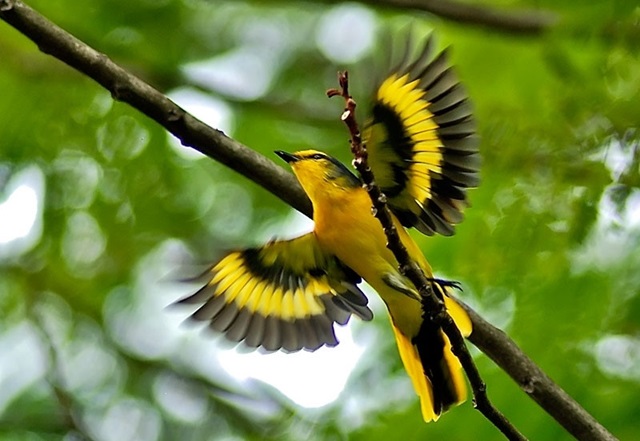
Super beautiful image of a yellow bird spreading its wings.
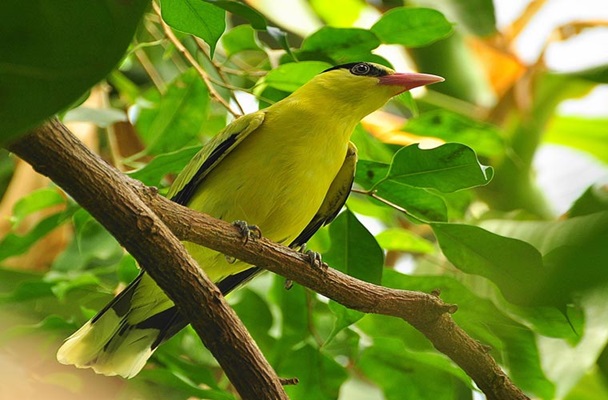
A yellow bird stands out among the green leaves.
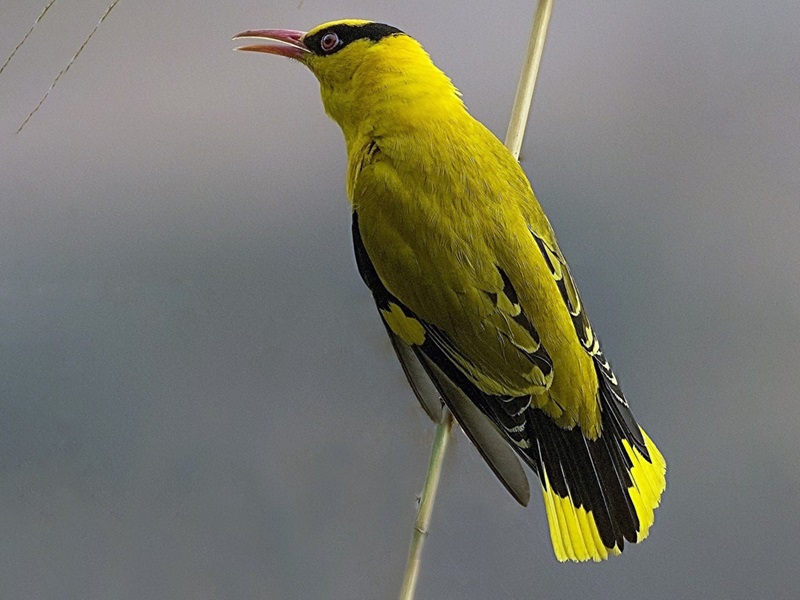
The irresistible beauty of the oriole in Vietnam.

Picture of a yellow bird taking care of its chicks.
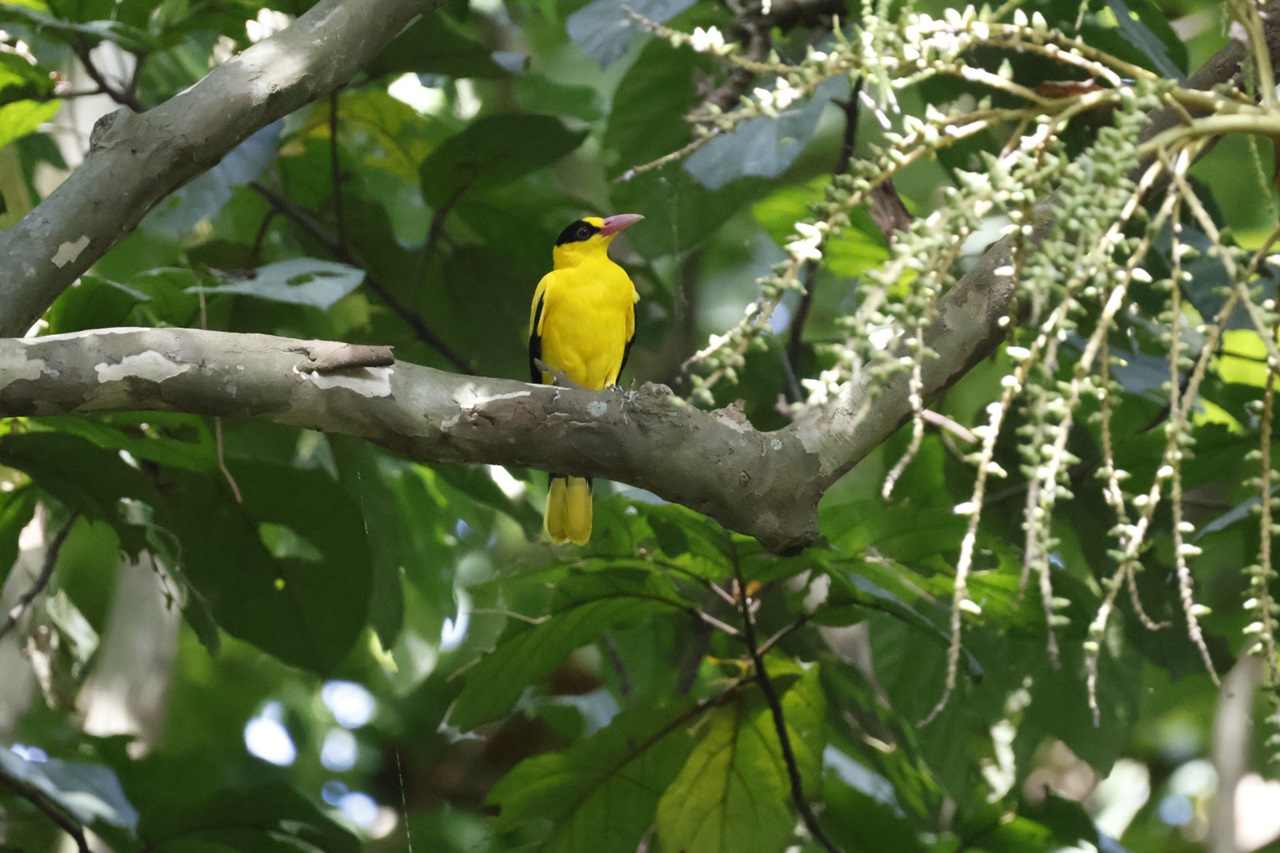
A yellow bird is perched on a high tree branch.
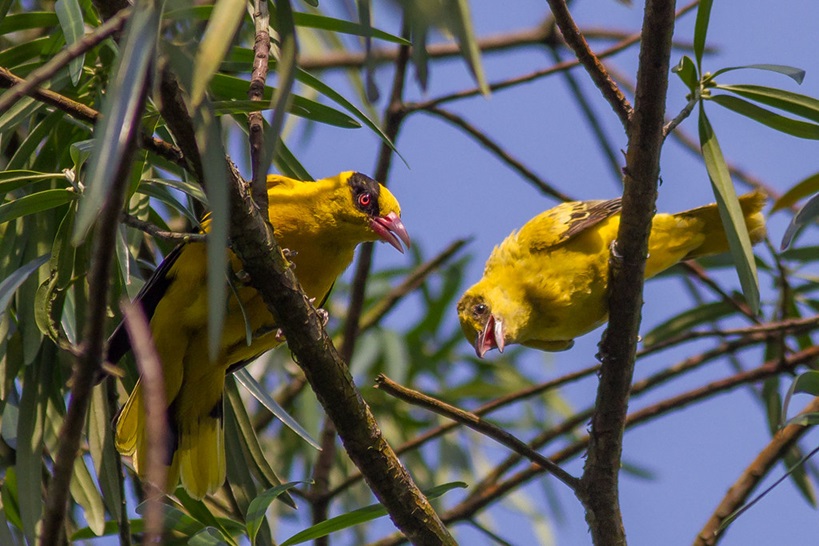
Two orioles are looking around for food.
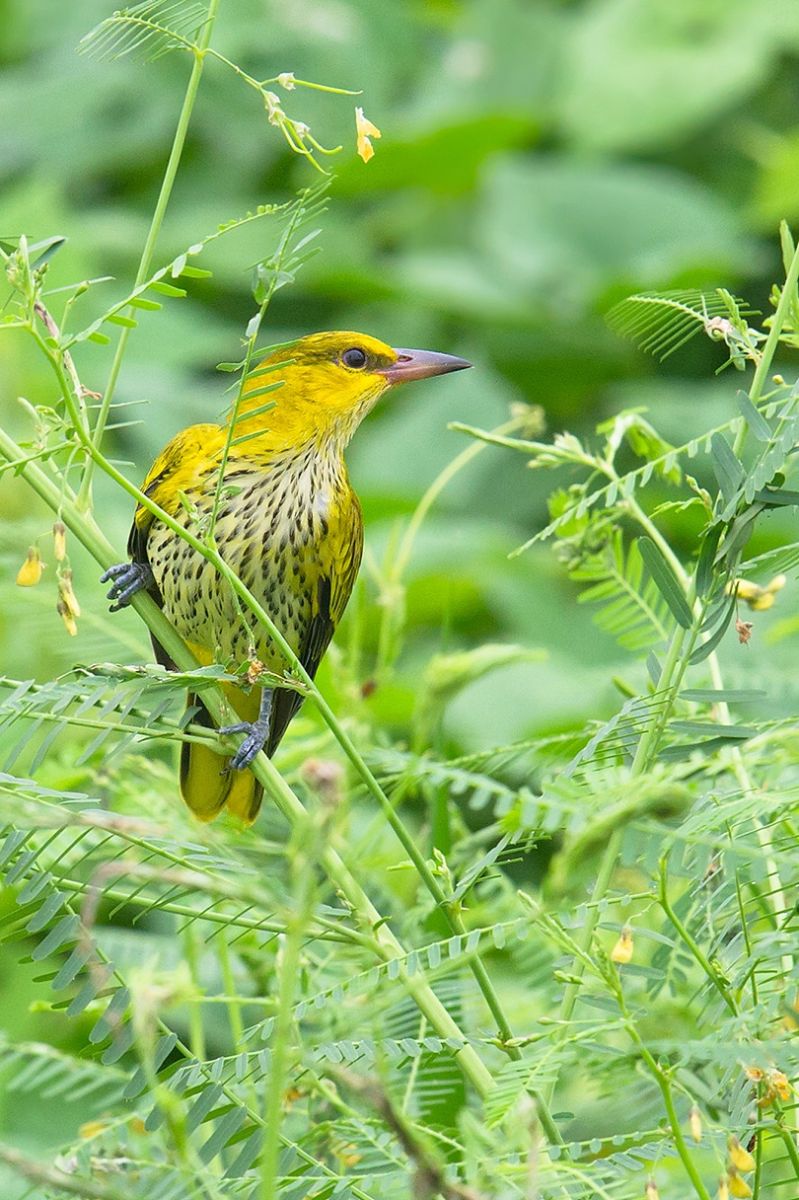
A female oriole is perched on a tree branch.
Through the content that nicebirds.net shares above, it can be seen that the Oriental oriole is one of the most favorite pet birds in Vietnam. They not only have an eye-catching appearance but also have a very beautiful singing voice, are easy to raise and easy to tame.
Hopefully through the above article, you have "pocketed" a lot of useful knowledge and good tips in raising and caring for this bird species.
If you want to learn more about more pet birds, remember to visit our Blog section every day to read more articles!

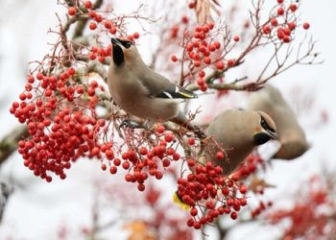

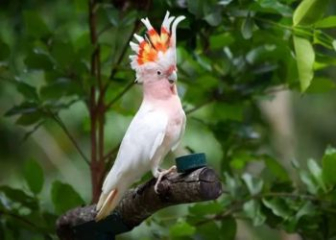

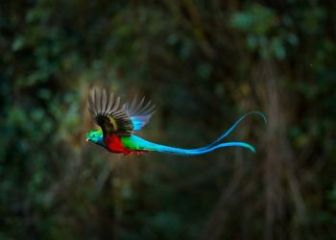





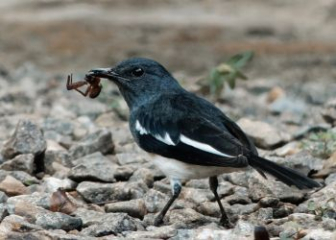
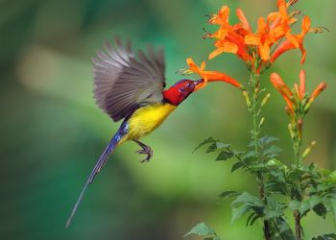


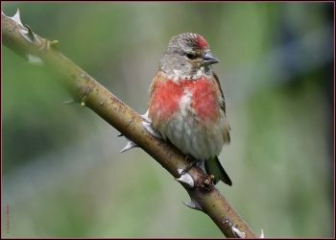
_350x250.jpg)
